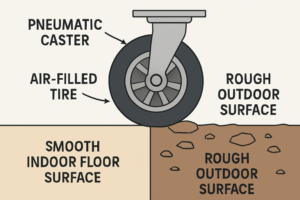Getting to the top of Google has never been harder. The competition has matured, algorithms have become self-learning ecosystems, and AI now audits everything from your internal links to your sentence cadence. But despite all that noise, the principles that drive rankings still follow a clear logic. You need technical strength, credible authority, and genuine user engagement.
In 2025, the winners are not those chasing loopholes, but those building search ecosystems that compound value over time.
Technical SEO: Your Site’s Foundation
Every high-ranking site shares one trait: flawless infrastructure. Page speed, crawl depth, and structured data are no longer “nice to have” but minimum requirements.
Matt Diggity, one of the most respected SEO strategists in the field, explains that Google’s systems now assess engagement velocity. In short, how quickly a page satisfies user intent. A laggy or bloated site breaks that momentum instantly.
Focus your audit on:
- Core Web Vitals: LCP under 2.5 s, CLS < 0.1, and INP < 200 ms.
- Crawl accessibility: No blocked assets, no orphan pages, clear XML sitemaps.
- Structured data: Schema markup for articles, products, FAQs, and reviews to feed Google’s AI models.
A secure SSL certificate, fast hosting, and clean JavaScript are the silent enablers of visibility. Ignore them, and no backlink will save you.
Keyword Intent Over Keyword Density
Keyword stuffing died years ago. What ranks today is intent alignment. Google’s Search Generative Experience (SGE) now interprets meaning clusters, not exact phrases.
Query semantics now matter more than raw keyword placement. Instead of optimizing for “cheap laptops 2025,” create a hub that answers related searches. Think performance comparisons, lifespan expectations, AI-optimized features, and price evolution.
Use tools like Ahrefs’ Keyword Explorer 2.0 and Also Asked to map these clusters. Match them to your funnel:
- Informational: how-tos, comparisons, trend analyses.
- Transactional: product demos, pricing, sign-ups.
- Navigational: brand or service-specific searches.
A single pillar page, reinforced by 3–5 supporting cluster articles, outperforms a dozen loosely linked blogs.
E-E-A-T: Proof, Not Promise
Google’s ranking raters now measure Experience, Expertise, Authoritativeness, and Trustworthiness (E-E-A-T) in real time through metadata, author profiles, and entity linking.
To demonstrate experience, cite first-hand testing, internal data, or original visuals. To establish expertise, attach verifiable bios, LinkedIn credentials, or recognized certifications. To build authority, earn backlinks from your vertical’s credible sources like academic institutions, verified news sites, or official associations.
For trustworthiness, make your policies public. This includes editorial guidelines, affiliate disclosure, and user privacy.
This is where industry examples help. When it comes to travel, booking sites that show full fees, cancellation policies, and confirmed guest reviews. Top fintech loan aggregators make APR ranges, eligibility requirements, and regulatory disclaimers easy to see before a user signs. Also consider platforms that rank as top picks for Malaysian casino players. They dominate because their transparency acts as a trust signal. Licensing info, payout details, and bonus conditions are clearly displayed. Google recognizes this as “user-first” documentation, not marketing spin.
UX and Engagement: The Dwell-Time Multiplier
Being ranked is one thing, but staying in the top spot is a whole different ballpark. Sites that earn position 1 tend to pair SEO with a UX strategy.
Embed elements that sustain attention:
- Autoplay muted explainers or demo videos.
- Interactive tools (ROI calculators, product finders).
- Sticky table-of-contents navigation.
- Smart internal linking every 400–500 words.
According to a study by SEO Discovery, pages that people stay on for three to five minutes longer often rank better on Google. If your site promises expertise, prove it visually. Use clean typography, minimal distraction, and fast, intuitive flow.
Content Depth and Update Cadence
Things that are at the top of Google in 2025 are still alive. AI-generated freshness scores now favor pages that get new statistics, frequently asked questions, or trending parts every three months.
When you make changes, use the republish-with-revision approach instead of making a new URL. In this way, the link value stays the same. “Updated Q3 2025” should be added to the insights to show that they are current.
This idea that regular small changes keep a URL indexed as current is called “temporal optimization.” Mix that with deep content. 1,500 to 2,500 words of mixed media, headings every 200 words, and sources that you can trust. Instead of odd blogs, link to Google’s Search Central, HubSpot Academy, or Statista.
Backlinks That Actually Work
Quantity cannot beat quality. Topical and semantic relevance now determine how powerful a link is. A backlink from a mid-tier site that is related to your niche is more valuable than one from a general news provider with a DA of 90.
Earn links by:
- Publishing data studies that others want to cite.
- Offering expert commentary via HARO-style journalist requests.
- Creating regional guides that attract natural references from comparison and review sites.
Note: Avoid PBNs, link exchanges, and mass-guest-post networks. Google’s SpamBrain 3.0 now detects and nullifies them within weeks.
Local and Entity SEO
Entity clarity is very important for companies that depend on where they are located. You can link your NAP (name, address, and phone number) data from different schemas, organized citations, and directories.
Make sure your Google Business Profile is correct, and also make sure that Apple Maps, Bing Places, and niche sites are the same. Regularly getting reviews is important because they update the sentiment signals that affect both organic and map-pack results.
If your brand is active in more than one area, use subfolders (like /my/ or /sg/) instead of subdomains to keep your authority.
AI and Human Hybrid Content
AI writing tools now speed up ideation. But the top-ranking pages still require human calibration. Use AI for outlines, data extraction, and structure, then inject your own voice, examples, and verifiable evidence.
Google’s AI Overview prefers human-edited clarity over raw machine output. Every paragraph should show intent, empathy, and precision.
Measure, Iterate, Repeat
SEO in 2025 is a living system. Use:
- Google Search Console → Performance Tab to monitor click-through and impressions.
- GA4 Engagement Report for session duration.
- Ahrefs Site Audit v3 for technical errors.
- GSC API + Looker Studio dashboards for pattern tracking.
Every 90 days, perform a mini-audit. Update decaying pages, compress images, check 404s, and refresh metadata. Ranking once is luck. Staying ranked is a process.
Conclusion
To get to the top of Google in 2025, you can’t cheat the system; you have to work with it. The domains that are growing the fastest all have things in common: technically sound builds, real expertise, and material that puts the audience first.
Whether you’re a SaaS platform, a travel portal, or a comparison site, the pattern is identical. Clarity, relevance, and credibility always win.
Google’s AI is hunting for keywords, sure, but it’s reading your intent even more. So write for people, prove your value, and maintain your data integrity. Do that, and the algorithm will follow.









